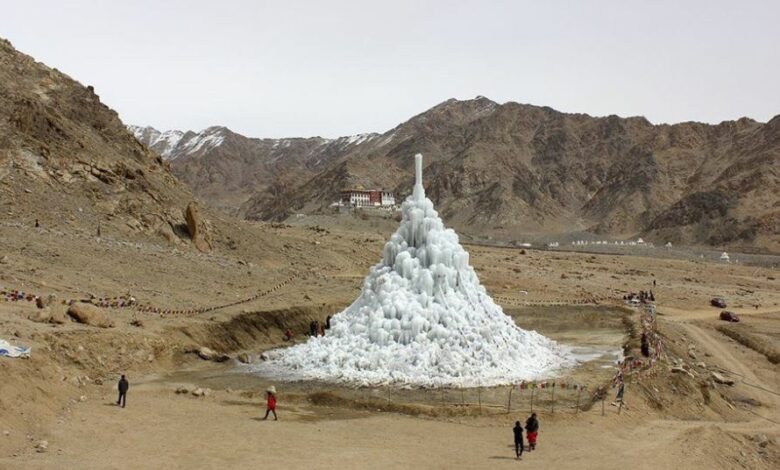Artificial glaciers in the Andes Mountains, that's what the Nilus Project is all about
Nilus Project: Specialists seek to redirect the melting of ice in the mountains of Cajón del Maipo and guarantee the water supply of nearby populations.

Through an ingenious technique that allows the creation of artificial glaciers in the Andes Mountains, specialists of the Nilus Project in Chile seek to redirect the melting of ice in the Cajón del Maipo mountains and guarantee the water supply of nearby towns, even during the dry season.
What we do is that we take the water, in this case from Parque Arenas, which is where we have our prototype, we take it and conduct it a little lower so that this potential difference generates energy that we can disperse into the air and freeze it with the temperature difference that is generated especially in mountainous places", explained Roberto Lara, civil engineer, Nilus Project.
To freeze the water, they build "stupas" or wooden igloos and take advantage of the water that naturally comes down from the frozen mountains. They project the water through the air as if it were a fountain. Because of the temperature difference, the water that falls on the igloo will accumulate in the form of ice and allow it to be stored frozen for months before being used.
Here we are not creating new water, the water really is in nature, it has a cycle, but clearly it has been affected by the effects of the great climate change that we are facing and we are looking for a solution that will actually allow this water to be stored for longer, said Enrique Gellona, director of Nilus Project.
Their goal is to build half a hundred of these structures, to guarantee water to communities near the mountain.
We are thinking that we want to build stupas of approximately two million liters and if we reach 50, it would be approximately 100 million liters that would serve more or less to supply a community of 100,000 people for three months, explained Roberto Lara, civil engineer, Nilus Project.




